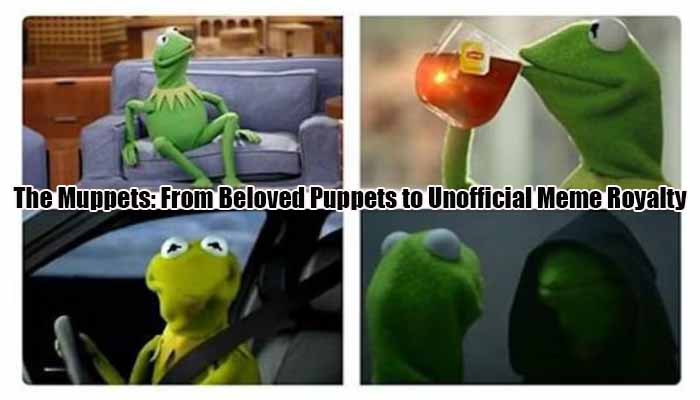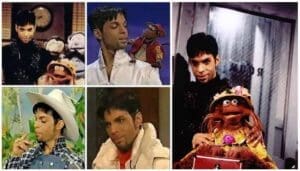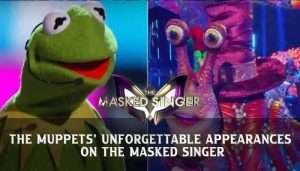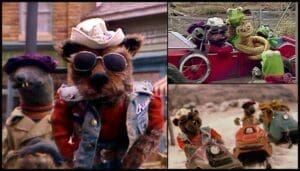The Enduring Magic of The Muppets in the Digital Age
Jim Henson’s extraordinary artistic vision and innovative spirit brought forth unique worlds and characters that remain as vivid and fresh today as when they were first conceived. His pioneering work revolutionized puppetry on television, moving beyond the static proscenium stage to dynamically engage characters using camera and lens. This technical advancement, coupled with direct control over puppet mouths and the use of softer construction materials, allowed for a significantly wider range of emotional expression, enabling the puppets to more accurately synchronize with dialogue and music.
The Muppets’ journey began with Sam and Friends (1955-1961), a short-form comedy program that quickly gained traction, leading to national television appearances and numerous humorous commercials for brands like Merita Breads and Faygo. Their undeniable appeal was further solidified on
Sesame Street (1969-present), where Henson helped develop iconic characters for children’s education. However, Henson believed these characters could entertain a much broader family audience, a vision that materialized with the global success of
The Muppet Show (1976-1981). This show introduced a new family of unforgettable characters, including the temperamental Miss Piggy, the insecure Fozzie Bear, and the frenzied Animal, cementing their status as a multi-media empire through subsequent feature films and series like
Fraggle Rock, The Dark Crystal, and Labyrinth.
The inherent relatability of these characters, their distinct personalities, and their remarkable visual expressiveness, meticulously crafted by Henson and his team, have made them uniquely suited for the digital age. This foundation has transformed them into unofficial meme royalty, ensuring their continued cultural relevance for new generations.
A Legacy Woven in Felt and Pixels: The Muppets’ Journey to Meme Stardom
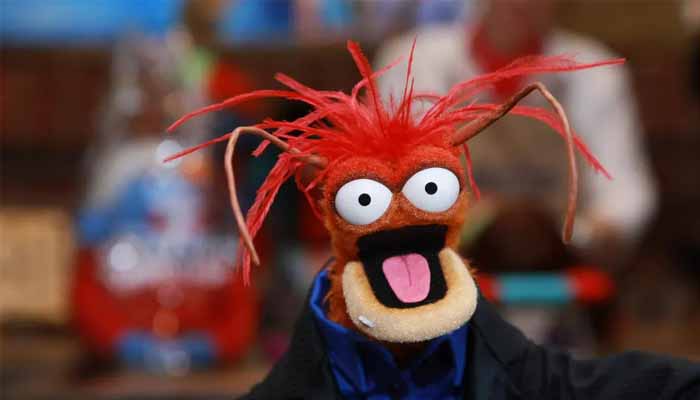
Jim Henson’s pioneering spirit was evident from his early experimental films, which expanded his knowledge of film techniques and led to greater innovations with the Muppets. This early focus on dynamic visual storytelling and profound character expression laid crucial groundwork for their future adaptability across media. The Muppets evolved from humble beginnings as commercial mascots to educational figures on
Sesame Street, eventually becoming global entertainment icons with The Muppet Show. Their enduring popularity was further bolstered by the acquisition of the Muppets and Bear in the Big Blue House properties by Disney in 2004, which led to a revitalization of the franchise through new feature films and television series.
A significant factor contributing to the Muppets’ widespread appeal and subsequent meme dominance is the profound depth and distinctiveness of their characters, established long before the advent of digital culture. Henson’s meticulous character development focused on creating figures with extensive emotional range and unique personalities. Characters such as Rowlf the Dog were considered “fully rounded” and possessed a “dry, self-deprecating sense of humor”. Miss Piggy embodies a “uniquely strong and feminine” yet “domineering and demanding” persona, while Fozzie Bear is a “sweetly insecure and absolutely terrible comedian”. Animal personifies “unbridled appetite” and raw energy, and Kermit the Frog serves as the pragmatic, often exasperated “straight man”. This pre-existing character depth means that when a Muppet image is used in a meme, it carries with it decades of established associations and emotional resonance, making the meme instantly impactful and understandable without requiring extensive context. The characters were designed for dynamic engagement, which translates perfectly to static, expressive meme images.
Furthermore, the Muppets’ visual expressiveness, a direct result of Henson’s innovative design, significantly facilitates their adaptation into memes. Henson’s revolutionary techniques for capturing puppetry on video, coupled with the flexible construction materials and direct puppeteer control over mouth movements, allowed for a wide spectrum of emotions to be conveyed. This technical ingenuity directly resulted in puppets with highly expressive faces and body language. Consequently, a single screenshot of a Muppet can communicate a complex emotion or reaction, such as Kermit’s exasperation, Beaker’s perpetual stress, or Animal’s wild joy. This visual clarity and the exaggerated nature inherent in their design make them easily interpretable and adaptable for various meme formats, serving as a powerful visual shorthand in online communication.
Kermit the Frog: The Meme Kingpin

Kermit the Frog, introduced in 1955 on Sam and Friends, stands as arguably Jim Henson’s best-known character and the de facto face of the Muppet franchise. His persona as a pragmatic, often exasperated leader makes him an ideal canvas for internet humor, as his reactions to life’s absurdities resonate widely with audiences.
One of the most recognizable Kermit memes is “But That’s None of My Business.” This meme typically features Kermit sipping tea, accompanied by a caption that delivers a subtle, sarcastic, or passive-aggressive observation, followed by the phrase “But that’s none of my business”. Its visual origin can be traced to a specific still from a 2014 Lipton Iced Tea commercial, which was a tie-in to the film
Muppets Most Wanted. The meme gained significant popularity on Instagram in early 2014, with accounts like @kermitbelike and @thatsnoneofmybusinesstho quickly amassing followers. Its virality experienced a notable resurgence in 2016 when basketball star LeBron James posted a photo wearing a Kermit hat with the meme’s signature caption, propelling it back into mainstream consciousness. The meme’s versatility allows it to be used for “controversial statements” or “sarcastic remarks often used after pointing something out (often negative) about somebody or insulting him or her” , applicable to a wide range of scenarios from celebrity gossip to everyday annoyances.
Another highly popular Kermit meme is “Evil Kermit,” which visually represents internal conflict. This meme depicts two Kermits: the “good” Kermit and his doppelganger, Constantine, from the 2014 film Muppets Most Wanted, who appears in a black cloak. These two figures symbolize opposing sides of one’s conscience. The meme first gained traction on Twitter in November 2016, with a tweet from @aaannnnyyyyaaaa that read “me: sees a fluffy dog / me to me: steal him” quickly going viral. This meme humorously illustrates internal dialogue, often encouraging actions that “might sound good, but probably aren’t a good idea”. It is widely regarded as a modern visual representation of Sigmund Freud’s “id” or the manifestation of “intrusive thoughts”. The meme’s simplicity and universal relatability across various age groups contributed to its rapid dissemination across social media platforms including Twitter, Instagram, and Facebook. The concept has even branched out, leading to variations such as “Evil Miss Piggy,” applying the same internal conflict dynamic to other characters.
Kermit’s consistent portrayal as a pragmatic, straight-man figure amidst a cast of eccentrics makes his reactions to absurd or frustrating situations highly relatable. When he sips tea or confronts his “evil” self, he reflects common human experiences of judgment or internal struggle. This universality, combined with his long-established fame, allows him to transcend specific contexts and become a widely applicable template for expressing shared feelings in a humorous way. The “But That’s None of My Business” meme provides a culturally acceptable, humorous avenue to deliver critiques or observations without direct confrontation, mirroring a common passive-aggressive communication style prevalent online. Similarly, “Evil Kermit” allows users to externalize and collectively laugh at their “darker impulses” or “intrusive thoughts” in a relatable, non-judgmental manner. This indicates that Muppet memes serve not merely as entertainment, but also as a form of social and psychological coping mechanism, fostering shared understanding and catharsis within the digital sphere. The initial virality of Kermit memes on social media was significant, but their repopularization by figures like LeBron James demonstrates a key factor in meme longevity: adoption by influential mainstream personalities. This crossover appeal introduces the meme to broader audiences who might not be deeply embedded in internet subcultures, thereby cementing its status as a cultural icon and extending its lifespan beyond typical meme cycles.
Beyond these two prominent examples, other iconic Kermit expressions, such as his various states of “shock or anger” , his “furious typing” , or his attempts at “acting casual” , have also become popular reaction images and GIFs, further solidifying his status as the undisputed meme kingpin.
Table 1: Iconic Muppet Memes: Origins and Meanings
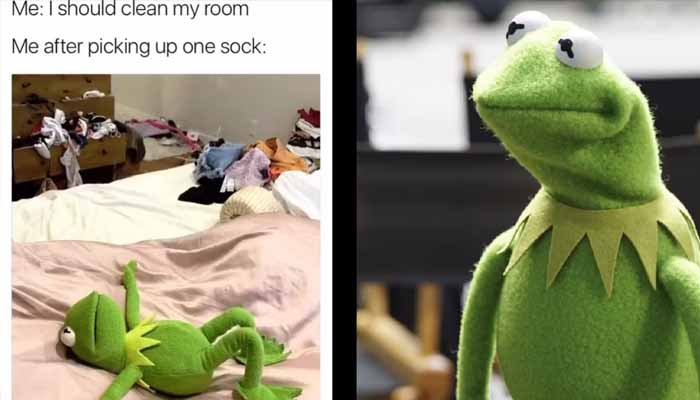
| Meme Name | Key Character(s) | Origin/Source | Core Meaning/Usage |
| But That’s None of My Business | Kermit the Frog | Lipton Iced Tea commercial (2014), Instagram (2014) | Sarcastic commentary or passive-aggressive observation, often after pointing out something negative or insulting. |
| Evil Kermit | Kermit, Constantine | Muppets Most Wanted (2014), Twitter (2016) | Depicts internal conflict between a “good” conscience and a “darker impulse” or intrusive thought. |
| Beaker’s “Meep” | Beaker | The Muppet Show (from Season 2, 1977) | Expresses relatable stress, anxiety, fear, or confusion, especially in response to mishaps or scientific experiments gone wrong. |
| Swedish Chef’s “Bork, Bork, Bork!” | The Swedish Chef | The Muppet Show (1975) | Nonsensical, mock-Swedish gibberish used for absurd humor, often in cooking contexts, signifying chaos or playful incomprehensibility. |
| Gonzo’s “Whatever” | Gonzo | The Great Muppet Caper (1981) | Highlights ambiguity of identity or species, used to express a quirky, unclassifiable nature or a dismissive attitude. |
Export to Sheets
Beyond the Swamp: A Gallery of Memeable Muppets
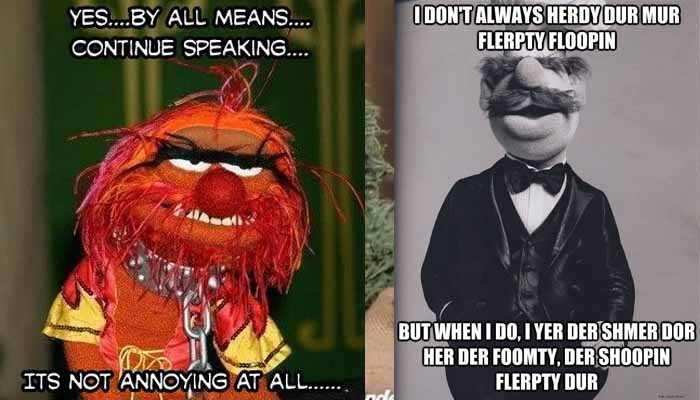
While Kermit the Frog holds the crown as the undisputed meme king, the rich tapestry of Muppet characters ensures broad appeal and diverse comedic applications across the internet. Each character’s distinct personality lends itself to specific meme archetypes, allowing creators to find the perfect visual shorthand for a wide array of human experiences.
Animal: The Chaotic Energy Animal, the wild and frenzied drummer for Dr. Teeth and the Electric Mayhem, is known for his guttural shouts, monosyllabic vocabulary, and unbridled appetite. He embodies raw, untamed energy and id-like impulses, making him a powerful symbol for expressing feelings of wild excitement, uncontrollable urges, or a complete lack of restraint in memes. His legendary drumming battles, such as those with Buddy Rich or Dave Grohl, are visually potent and frequently referenced in online content.
Beaker: The “Meep” of Relatable Stress Beaker, Dr. Bunsen Honeydew’s hapless lab assistant, is perpetually stressed and often the unfortunate victim of experiments gone awry. He communicates almost exclusively through high-pitched “Meep” sounds, which, despite being non-verbal, convey a clear sense of anxiety, fear, and confusion. Beaker’s constant state of alarm and his expressive, non-verbal “meeps” make him a perfect representation of modern anxiety, stress, and the feeling of being overwhelmed in meme culture. His visual reactions are universally understood, transcending language barriers and contributing to his global appeal.
The Swedish Chef: The Nonsensical Charm of “Bork, Bork, Bork!” The Swedish Chef, a culinary character who speaks in mock Swedish gibberish and engages in slapstick cooking, often involving live animals, is instantly recognizable. His signature phrase, “Bork, bork, bork!” , encapsulates his absurd humor. The humor derived from the Swedish Chef lies in his delightful absurdity and the playful representation of the “liminally alien nature of other cultures being funny”. Memes featuring him frequently highlight chaotic situations, humorous incompetence, or simply celebrate the joy of nonsensical language. His “chef-speak” is instantly recognizable and contributes to his unique comedic appeal.
Gonzo: The “Whatever” of Identity and Eccentric Charm Gonzo is an eccentric, hooked-nosed creature and stunt performance enthusiast, whose species remains a running gag throughout the Muppet franchise. He has famously been referred to as a “whatever,” embracing his unique, unclassifiable nature. Gonzo’s distinctive appearance and his embrace of his “whatever” identity make him a compelling character for memes that celebrate quirkiness, individuality, or defiance of categorization. His passion for bizarre stunts also lends itself to memes about extreme dedication or outlandish ideas.
While Kermit covers broad relatability, the other Muppets thrive in more specific, yet universally recognized, archetypes. Animal embodies raw id and chaos, Beaker represents anxiety and victimhood, the Swedish Chef is pure absurdist humor, and Gonzo celebrates eccentricity. This means the Muppet universe offers a character for nearly every mood or situation, allowing meme creators to find the perfect visual shorthand for a wide array of human experiences, thereby contributing to the franchise’s overall meme dominance. Furthermore, characters like Beaker and the Swedish Chef communicate primarily through sounds and exaggerated physical comedy, relying on visual cues and universally understood expressions. This non-verbal and quasi-verbal communication means their memes transcend language barriers, making them highly accessible and relatable to a global internet audience and contributing to their widespread adoption beyond English-speaking communities.
Table 2: Muppet Characters & Their Meme Archetypes
| Character | Primary Archetype/Meme Persona | Key Expressions/Situations in Memes |
| Kermit the Frog | The Relatable Everyman / Internal Conflict | Sipping tea (“But That’s None of My Business”), Evil Kermit (internal struggle), typing furiously, exasperated reactions, acting casual. |
| Miss Piggy | The Diva / Demanding Partner | “Hiiii-ya!”, dramatic poses, demanding attention, romantic pursuits, “Moi,” “Evil Miss Piggy” (internal conflict). |
| Animal | The Chaotic Energy / Unbridled Id | Wild drumming, guttural shouts, expressing extreme excitement or uncontrollable urges, “Eat drums!”. |
| Beaker | The Stressed Victim / Scientific Mishap | “Meep!” (expressing fear, anxiety, confusion, stress), reactions to explosions or experiments gone wrong. |
| Fozzie Bear | The Insecure Comedian / Awkwardness | “Wocka Wocka!”, awkward pauses, self-deprecating humor, cringeworthy attempts at being funny. |
| The Swedish Chef | The Absurdist / Nonsense Humor | “Bork, bork, bork!”, chaotic cooking, nonsensical gibberish, humorous incompetence. |
| Gonzo the Great | The Eccentric / Identity Ambiguity | Stunt mishaps, “Whatever” (referring to his species), embracing weirdness, unique appearance. |
| Statler and Waldorf | The Hecklers / Cynical Commentary | Sitting in the balcony, critical remarks, unimpressed expressions, mocking performances. |
Export to Sheets
The Anatomy of a Muppet Meme: Why They Go Viral
The widespread success of Muppet memes can be attributed to several interconnected factors, deeply rooted in the characters’ original design and their resonance with digital communication. For many, the Muppets evoke strong “nostalgic feelings,” creating a pre-existing emotional bond that encourages engagement and sharing of Muppet-related content. These characters are “well known to millions of people the world over” , establishing a shared cultural lexicon that facilitates instantaneous meme communication.
Jim Henson’s groundbreaking puppetry allowed for “a wider range of emotions” to be expressed , which translates directly into highly expressive faces and body language in still images and GIFs. This visual expressiveness is a core component of their memeability. The “sheer versatility of the Muppets” and their ability to be placed in “instantly relatable or dark situations is somehow extremely hilarious”. Even without the ability to blink, Muppet expressions convey profound meaning, making them effective visual shorthand for a myriad of human emotions.
Muppet memes are also remarkably versatile, capable of adapting to diverse relatable situations. They “cater to different everyday problems” and can be applied to a “wide range of scenarios”. The ability of these memes to “describe how we feel in a more exaggerated, and humorous way” is a fundamental reason for their virality. Kermit, for instance, can represent everything from “sarcasm or frustration” to “social commentary” or even shift from “absurd humor to heartfelt sentimentality”.
The enduring nature of Muppet memes can be understood through Richard Dawkins’ concept of memes as units of cultural transmission, characterized by fidelity, fecundity, and longevity. The
fidelity of Muppet memes is evident in how their characters remain instantly recognizable, with their core traits intact across various meme iterations, ensuring the message is “readily copied and passed from mind to mind relatively intact”. Their
fecundity is demonstrated by their rapid spread across platforms like Instagram, Twitter, Tumblr, and Reddit, often gaining thousands of likes and retweets within days. Finally, their
longevity is particularly striking; Kermit memes, for example, have maintained a “reoccurring” presence and are considered “evergreen” over several years. This persistence is not merely due to initial virality but to their continuous growth and adaptation, where “each development is an extension of the previous ones,” constantly refreshing their appeal. Furthermore, Muppet memes meet criteria for success such as utility, simplicity, expressivity, and conformity, as they are “not that complicated to understand” and “reach a wide audience”.
The unique nature of Muppets—puppets that interact seamlessly with humans and are designed for dynamic expression—creates a distinct visual style that significantly boosts their memeability. This blend of “real/unreal” allows for exaggerated, almost cartoonish reactions that are instantly legible and humorous in meme form, avoiding the uncanny valley effect sometimes associated with CGI or other digital characters. Their “physical body” provides a tangible, relatable object through which to project ideas, making them more effective than abstract concepts or less expressive characters. The success of Muppet memes, particularly “Evil Kermit,” stems from their ability to tap into “relatable commentary” and “personal experience”. This shared humor about everyday dilemmas or intrusive thoughts “creates a sense of unity” and “camaraderie” among online users. Memes become a collective language for expressing feelings, fostering a sense of community around shared experiences, which is a powerful driver of viral spread. Unlike many memes that quickly fade, Kermit memes, for instance, have a “reoccurring” presence and are “evergreen”. This longevity is attributable not just to initial virality but to the characters’ “timeless and universal personality” and their inherent “versatility”. The ability for Muppet characters to be “reinterpreted and reimagined in various contexts” and for “new iterations” to spread means the meme format itself is continuously refreshed, preventing staleness and ensuring ongoing relevance.
The Muppets’ Digital Renaissance: Impact on Franchise Relevance
The proliferation of Muppet memes has significantly influenced the franchise’s contemporary relevance, acting as a powerful bridge to new generations of fans. Kermit’s widespread meme stardom has effectively “introduced the Muppets to a new generation of fans” , thereby ensuring the franchise’s “continued relevance” in an ever-evolving media landscape. For many younger individuals, Muppet memes served as the initial gateway, prompting them to explore and appreciate the broader franchise beyond what they might have previously considered “kids’ stuff”.
A notable dynamic has emerged between fan-created content and official output. There is a prevailing sentiment among some fans that “the internet has done more interesting/fun things with the muppets than disney is willing to do”. Fan-made “shitposts and memes” are often perceived as “boundary and medium pushing” , actively keeping the spirit and fun of the Muppets alive even when official content is sometimes viewed as “regurgitation and nostalgic pandering”. This vibrant, grassroots activity demonstrates an enduring affection for the Muppets and a clear demand for more diverse media featuring them. The rise of Muppet memes, particularly Kermit’s, functions as a powerful, organic marketing tool. It introduces the characters to younger audiences through a medium they actively engage with (social media), bypassing traditional content consumption habits. This digital realm ensures a continued relevance for the franchise, even when official output might be perceived as stagnant by some fans. This grassroots activity demonstrates enduring love and demand for the characters, implicitly influencing how the franchise is perceived and potentially even guiding future official content directions by showcasing what resonates with audiences.
The influence of Muppet memes extends beyond fan communities, impacting mainstream media and advertising. Brands have strategically “leveraged Kermit’s popularity to create engaging and humorous marketing campaigns” , often incorporating his iconic voice or likeness, as seen in Booking.com commercials. This “crossover appeal has helped to cement Kermit’s status as a cultural icon, bridging the gap between traditional entertainment and digital culture”. The acquisition of the Muppets by Disney in 2004 and their ongoing investment in new content, including films, television shows, theme park attractions, and documentaries, signifies a continuous effort to maintain the franchise’s relevance in the public eye. Muppet memes do not exist in a fan-driven vacuum; they have a tangible impact on mainstream culture and advertising. Brands leverage the characters’ meme popularity, demonstrating that digital virality translates into commercial value. This creates a feedback loop: memes keep the Muppets culturally visible, which makes them attractive to advertisers, which in turn reinforces their iconic status and introduces them to even wider audiences, further fueling their meme potential.
Conclusion: The Muppetational Future of Internet Culture
The enduring legacy of The Muppets, from their inception by Jim Henson to their current status as internet meme royalty, is a compelling testament to the power of timeless character design and adaptable storytelling. Henson’s foundational vision of creating expressive, relatable characters, combined with the inherent versatility of puppetry, forged a perfect synergy for digital memeification. The Muppets were not merely ready for prime time television; they were, perhaps unknowingly, perfectly primed for the dynamic, interactive landscape of the internet.
The Muppets’ meme legacy is far from a fleeting trend; it is a robust demonstration of their “timeless and universal personality” and their remarkable ability to adapt and evolve with changing media landscapes. This digital renaissance has cemented the Muppets’ place as enduring cultural icons, bridging generational divides and showcasing the profound power of shared humor and emotional connection in the digital age. Their future, much like their vibrant past, will undoubtedly continue to be a dynamic, unpredictable, and utterly Muppetational journey within the ever-expanding realm of internet culture.

